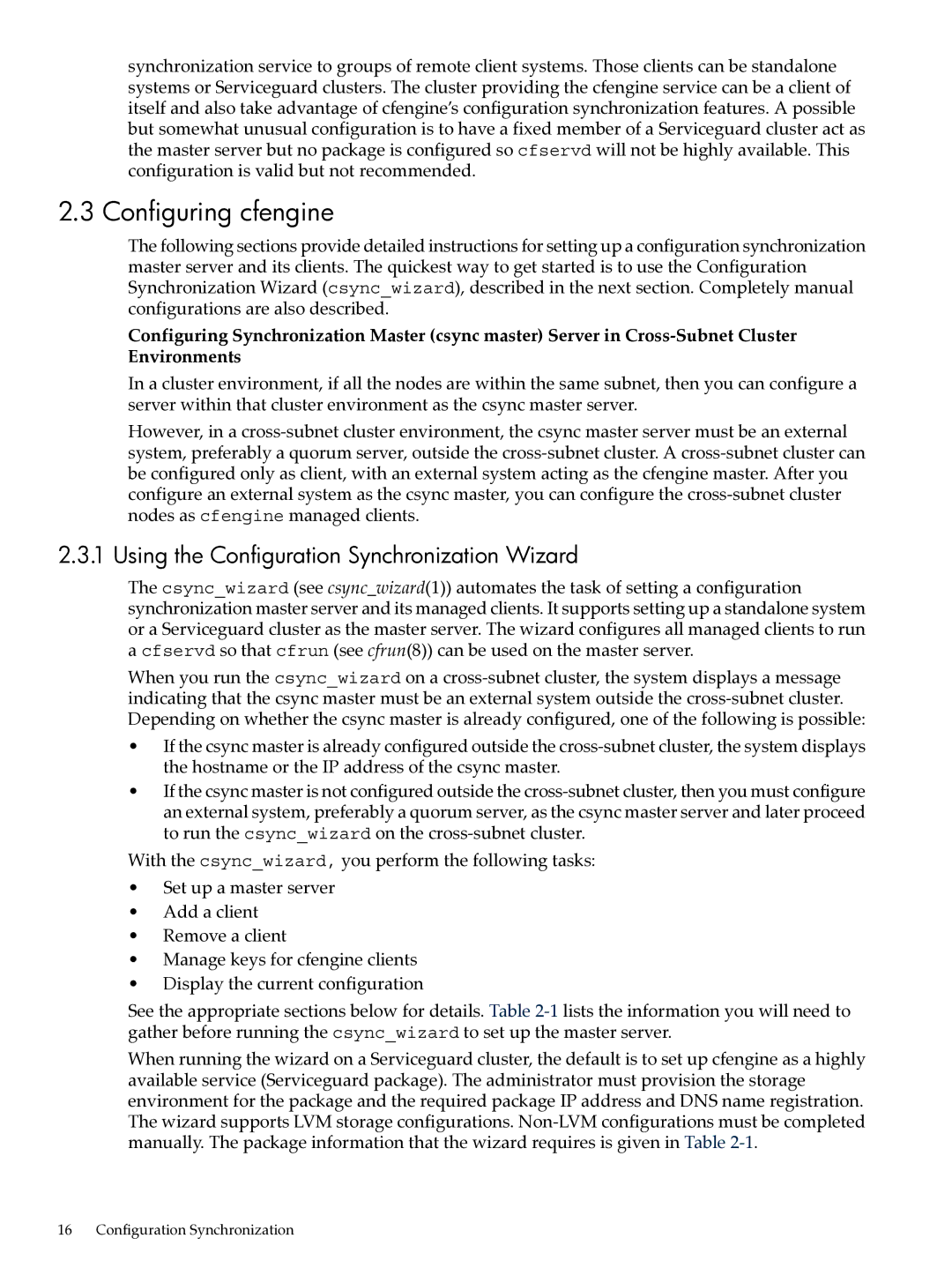synchronization service to groups of remote client systems. Those clients can be standalone systems or Serviceguard clusters. The cluster providing the cfengine service can be a client of itself and also take advantage of cfengine’s configuration synchronization features. A possible but somewhat unusual configuration is to have a fixed member of a Serviceguard cluster act as the master server but no package is configured so cfservd will not be highly available. This configuration is valid but not recommended.
2.3 Configuring cfengine
The following sections provide detailed instructions for setting up a configuration synchronization master server and its clients. The quickest way to get started is to use the Configuration Synchronization Wizard (csync_wizard), described in the next section. Completely manual configurations are also described.
Configuring Synchronization Master (csync master) Server in
In a cluster environment, if all the nodes are within the same subnet, then you can configure a server within that cluster environment as the csync master server.
However, in a
2.3.1 Using the Configuration Synchronization Wizard
The csync_wizard (see csync_wizard(1)) automates the task of setting a configuration synchronization master server and its managed clients. It supports setting up a standalone system or a Serviceguard cluster as the master server. The wizard configures all managed clients to run a cfservd so that cfrun (see cfrun(8)) can be used on the master server.
When you run the csync_wizard on a
•If the csync master is already configured outside the
•If the csync master is not configured outside the
With the csync_wizard, you perform the following tasks:
•Set up a master server
•Add a client
•Remove a client
•Manage keys for cfengine clients
•Display the current configuration
See the appropriate sections below for details. Table
When running the wizard on a Serviceguard cluster, the default is to set up cfengine as a highly available service (Serviceguard package). The administrator must provision the storage environment for the package and the required package IP address and DNS name registration. The wizard supports LVM storage configurations.
